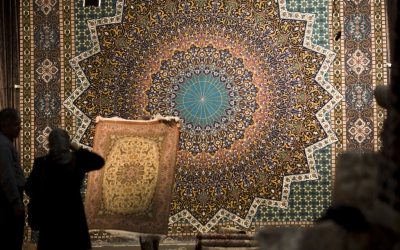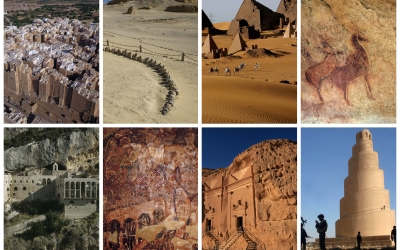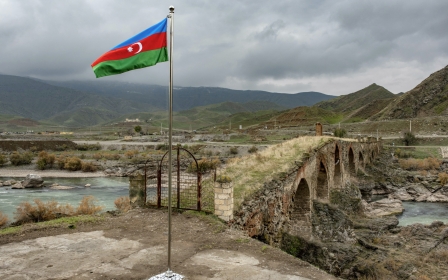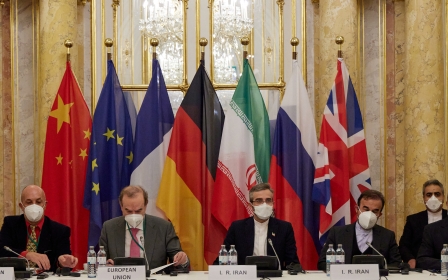Iranian press review: People ‘poisoned’ by exported fruits and vegetables rejected by other countries

Iranians ‘poisoned’ by own agricultural products
The people of Iran are at risk of consuming products with high levels of pesticide residues, experts warn, following reports of Iranian agricultural exports being rejected by foreign countries.
According to local media reports, a number of agricultural product shipments exported from Iran - including kiwi, potatoes, and bell peppers - have been returned in recent weeks following the discovery of high levels of nonstandard pesticide residues and the alleged use of sewage water in their cultivation.
It is estimated that more than 3,500 tonnes of potatoes were returned in early December from Uzbekistan, which cited “dangerous contamination”. Soon afterward the Indian Plant Protection and Quarantine Organization rejected Iran’s kiwi export due to the “presence of white particles” on the fruits.
In 2021, Iranian agricultural shipments have been returned from countries including Turkmenistan, Russia, Uzbekistan, Oman, and the United Arab Emirates for not following health and safety regulations in agricultural production.
Now, consumers are worried that these rejected fruits and vegetables could be sold at supermarkets across Iran, while exporters are asking why there have not been any regulations imposed by the government.
The Ebtekar daily, under the headline "Poison on People’s Table," criticised the Iranian authorities' indifference towards regulating the use of nonstandard pesticides in agricultural production.
The Javan daily wrote that the increasing use of sewage water for irrigation was another reason why some countries shun Iranian agricultural products.
The use of nonstandard fertilisers and pesticides, as well as polluted water, have already resulted in a “dramatic increase’ in the number of cancer patients in Iran, warned agriculture expert Kourosh Saljoughi, as quoted by the daily.
Pedram Soltani, a former deputy of the Iran Chamber of Commerce, Industries, Mines, and Agriculture, accused the authorities of putting the health of Iranians in danger.
“Other countries, one by one, are returning Iranian agricultural products to protect the health of their citizens. 85 million Iranians have been informed by foreigners that they are consuming poison every day. Due to this our people are dying or getting ill, and the officials don’t even care,” Soltani wrote on Twitter.
Following Iran’s decision to withdraw from the 2015 Iran nuclear agreement, its international trade has suffered under the United States’ “maximum pressure” sanctions.
President Joe Biden’s administration largely left those sanctions in place as they seek a return to the deal known as the Joint Comprehensive Plan of Action (JCPOA).
Earlier this week, the eighth round of negotiations resumed between Iran and the five world powers that are trying to revive the JCPOA.
Bam earthquake remembered
On 26 December 2003, Iran suffered one of the deadliest natural disasters in its history when an earthquake struck Bam, killing tens of thousands of people and destroying most of the city.
According to the official data, the Bam earthquake killed over 40,000 and injured about 200,000. Data from other research organisations have shown the casualties as at least 26,000 dead and approximately 30,000 injured.
Iran is especially prone to almost daily earthquakes because it sits astride many fault lines. In the historic city of Bam, many local houses are made of mud bricks, which can crumble easily.
On the 18th anniversary of the magnitude 6.7 2003 earthquake, Iranian media looked back on this event and how the city has fared since.
The Aftab daily says the city's rebuilding was not yet completed, nearly two decades later.
"The debris of many houses have yet to be removed, half-built buildings are left abandoned, the alleys are crying, and the people do not answer your questions… The city is still wounded; wounded from the debris which has never been removed," the daily wrote.
According to the Shahrvand daily, many of those who suffered physical injuries during the earthquake have not received adequate disability support from Iran’s official health care system.
The city is still suffering from the long-term damage caused by the earthquake, an unnamed healthcare social worker told the daily.
"The wheelchairs on the streets and the cries in cemeteries show that the [impacts of the] Bam earthquake have not gone away,” the social worker was quoted as saying.
"I don't even know if talking about this topic would make any difference [to Bam's residents]. I only hope this would remind the officials not to deprive these people of the help they need.”
Meanwhile, the country's official news agency IRNA reported that only 50 percent of the restoration of the 180,000-square-meter Bam citadel had been completed over the past 18 years.
This pre-Islamic desert citadel, known as the world's largest adobe building and listed on UNESCO world heritage sites, was nearly completely destroyed in the 2003 earthquake.
Migratory birds’ market faces call for shutdown
The residents of Fereydunkenar have signed a petition calling for officials to shut down the town’s migratory birds’ market to protect the precious local wildlife from mass hunting.
The 5,400-hectre Fereydunkenar Wetland is one of the richest ecosystems in northern Iran and home to millions of rare migratory birds, especially the rare and endangered Siberian cranes, which migrate between Russia and Iran, where they overwinter in the wetland. It's also a designated wetland of international importance registered on Ramsar Sites' list.
However, in recent years, the wetland has dramatically shrunk due to poaching, illegal construction projects, overgrazing, and the draining of the wetlands to create rice paddies.
After years of campaigning from environmentalists, over 9,000 residents have signed the petition to shut down the migratory birds’ market.
However, the Hamshahri daily warned that while the traditional ways of hunting may face a ban, a new form of poaching - controlled by mafia groups - may instead take over in protected sanctuaries.
Under the headline ”Shut Down Fredounkenar's Shamble”, the daily wrote that "the poachers have turned into mafia groups that massacre the birds in the most violent ways".
According to the environmentalist who spoke to the daily, illegal hunters with close ties with officials had installed singes in some parts of Fereydunkenar sanctuary, accompanied by signs reading "foresters' entrance is forbidden".
Profit is the main obstacle petitioners face in closing the market that operates freely in the Fereydunkenar every winter. According to the daily, over the four-month period, the migratory birds market can generate a $6m turnover.
In this year's market, a pair of wild geese were traded at between $25 and $32, a pair of mallards for $12 to $15, and pair of swans could be sold from about $172 to $240.
Furthermore, birds that are captured live can fetch even higher prices.
A pair of live swans, for example, could be priced at over $850, the daily reported.
*Iranian press review is a digest of news reports not independently verified as accurate by Middle East Eye
Middle East Eye delivers independent and unrivalled coverage and analysis of the Middle East, North Africa and beyond. To learn more about republishing this content and the associated fees, please fill out this form. More about MEE can be found here.






